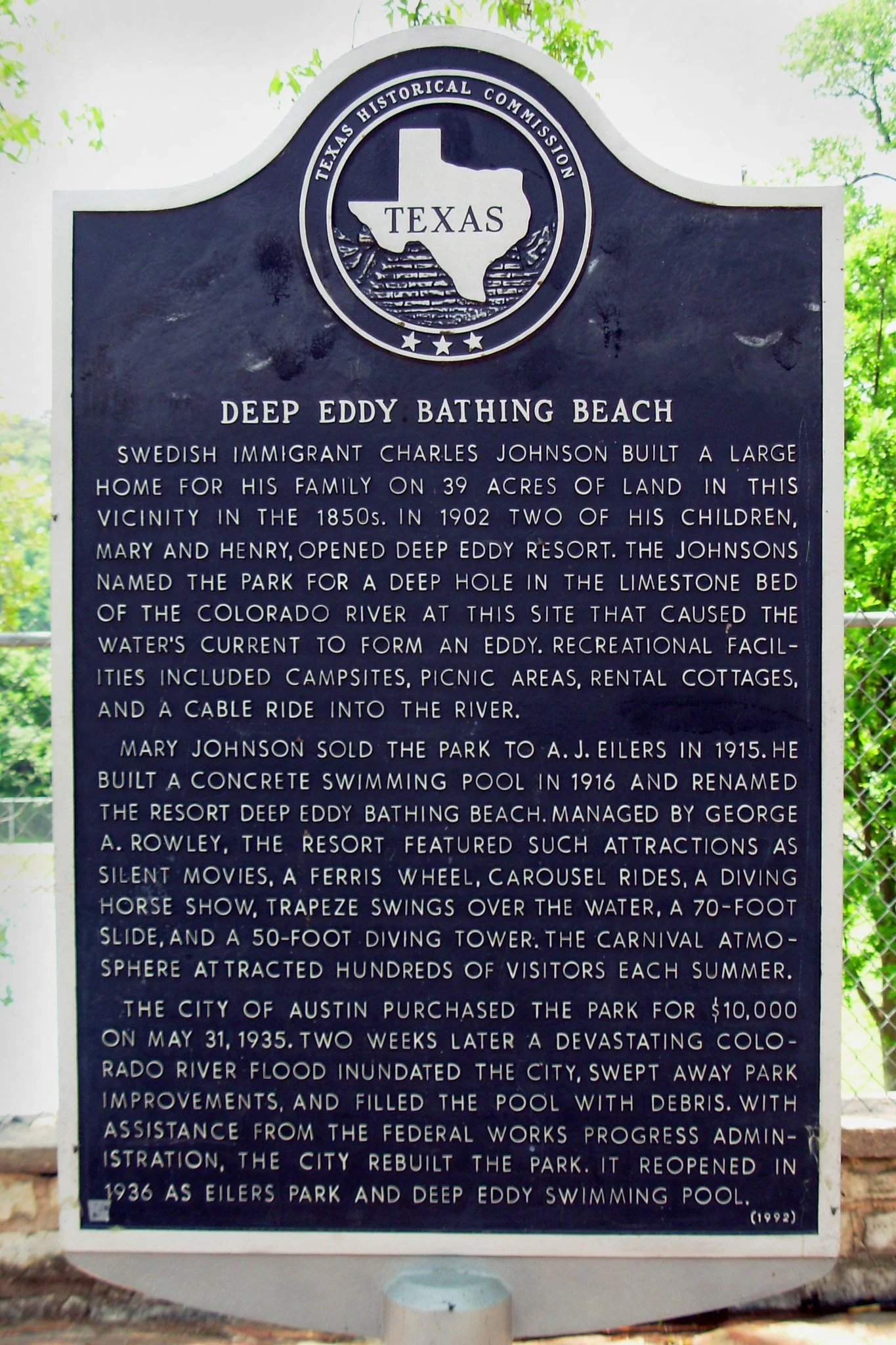
Photo courtesy of Steve Hobson
a pool to remember
Deep Eddy began simply as a swimming hole in the Colorado River that flows through Austin. Cold springs rose from the river banks and people swam in the river where a large boulder formed an eddy. In 1915, A.J. Eilers, Sr. bought the land surrounding the swimming hole and built the concrete pool. The pool served as the centerpiece of a resort, the Deep Eddy Bathing Beach, which featured cabins, camping, and concessions. As seen in historic photographs, pool amenities included a zip line across the pool and a tall slide, while other attractions included a diving baby and a Ferris wheel.
In 1935, the City of Austin bought the property for $10,000. Two weeks after the purchase, a massive flood on the Colorado River destroyed all the buildings, and filled the pool with mud and debris. The Works Progress Administration (WPA) rebuilt the bathhouse and the pool opened as a public park in July 1936.
Over time, the city has put the property to a variety of uses. Several years ago the city separated the western edge of the land as a park and playground named after A.J. Eilers. The city also converted Deep Eddy’s bathhouse to alternative uses including a long service as a wildlife science exhibit. In 2004 for safety reasons, the city removed the 70-year old, 50-foot tall cottonwoods that surrounded the pool.
Deep Eddy Pool is listed as a historic landmark on the National Register of Historic Places and has been the inspiration of various works of art. Texas musician, Jimmie Dale Gilmore, wrote the song “Deep Eddy Blues” about the pool and the nearby bar, the Deep Eddy Cabaret.
A collection of historical photographs from the Austin History Center can be viewed in our Gallery in the Historical section.
Deep Eddy makes many lists as one of the "must see" sites in the exciting City of Austin due to its unique un-chlorinated spring-fed pool waters in a large urban setting.



